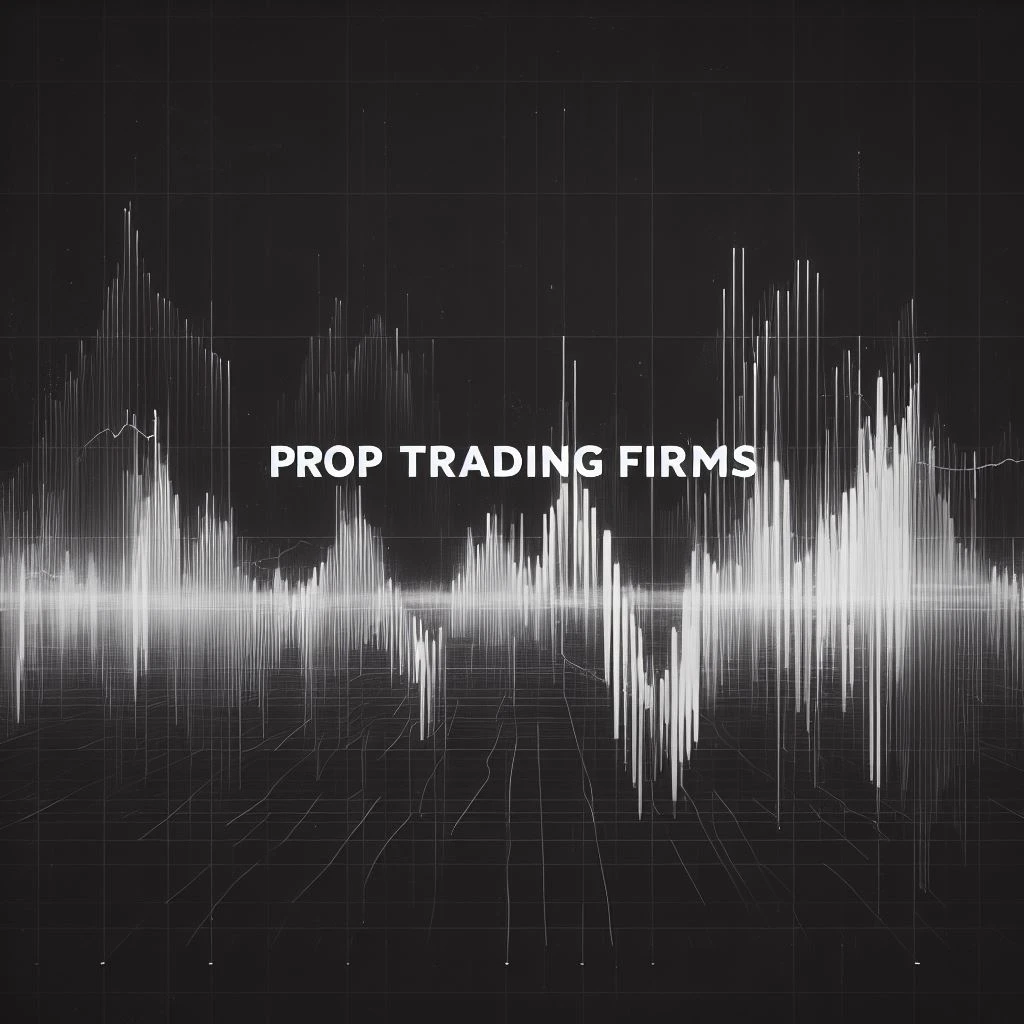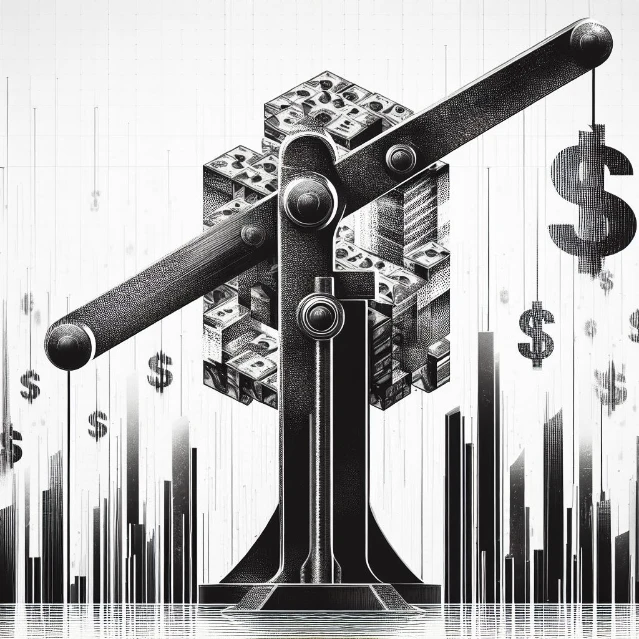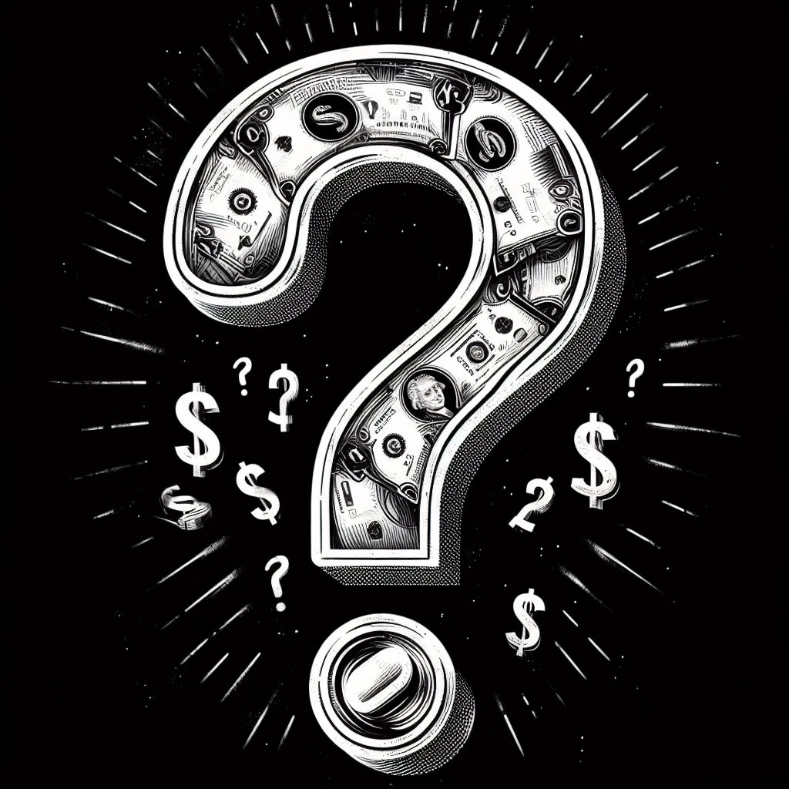Understanding Technical Analysis for Crypto

How to use technical analysis for crypto trading—Technical analysis is a powerful tool for gaining valuable insights into the cryptocurrency market. It focuses on studying historical price and volume data to identify patterns and trends to help predict future price movements. This approach allows traders to make informed decisions about buying and selling cryptocurrencies.
Technical Analysis vs. Fundamental Analysis
Technical analysis differs significantly from fundamental analysis, which focuses on evaluating the underlying value of a cryptocurrency based on factors such as its technology, team, and market adoption. While fundamental analysis considers the intrinsic worth of a cryptocurrency, technical analysis examines its price action and market behavior.Technical analysis is based on the assumption that all relevant information is already reflected in the price.
Technical analysis is a powerful tool for crypto traders, helping you identify trends and potential entry and exit points. While you can use it for any market, it’s especially helpful for forex trading, where you can find strategies for trading with small capital.
Learn more about how to trade forex with small capital to see how this can be applied to your crypto trading.
It assumes that past price movements can provide insights into future price movements. This is because price charts reflect market psychology, investor sentiment, and supply and demand dynamics.
Key Concepts in Technical Analysis
Technical analysis relies on various tools and indicators to analyze price data. These tools help traders identify potential trading opportunities and make informed decisions. Here are some of the key concepts in technical analysis:
- Price Action: This refers to the way the price of a cryptocurrency moves over time. Technical analysts study price action to identify patterns, trends, and support and resistance levels.
- Support and Resistance Levels: These are price levels where the price of a cryptocurrency is likely to bounce off. Support levels represent a price floor where buyers are willing to enter the market, while resistance levels represent a price ceiling where sellers are likely to take profits.
- Moving Averages: These are trend-following indicators that smooth out price fluctuations and help identify the market’s overall direction. Common moving averages include the 50-day moving average (MA) and the 200-day MA.
- Relative Strength Index (RSI): This momentum oscillator measures the magnitude of recent price changes to evaluate overbought or oversold conditions.
- MACD (Moving Average Convergence Divergence): This momentum indicator identifies trend changes by comparing two moving averages.
Using Technical Analysis to Identify Trading Opportunities
Technical analysis can be used to identify potential buying and selling opportunities by:
- Spotting Trend Reversals: By analyzing price action and using indicators, traders can identify potential trend reversals and capitalize on price movements. For example, if the price of a cryptocurrency breaks through a resistance level, it could signal a bullish trend reversal.
- Identifying Overbought and Oversold Conditions: Indicators like the RSI can help identify overbought and oversold conditions in the market. When a cryptocurrency is overbought, it may be due for a correction, while an oversold condition might indicate a potential buying opportunity.
- Confirming Fundamental Analysis: Technical analysis can confirm insights from fundamental analysis. For example, if a cryptocurrency’s fundamentals are strong but its price action suggests a downtrend, it might be wise to wait for a bullish signal before entering a trade.
Examples of Technical Analysis in Crypto Trading
Let’s look at some real-world examples of how technical analysis can be applied to cryptocurrency trading:
- Identifying a Breakout: Imagine the price of Bitcoin is trading between $30,000 and $35,000. If the price breaks through the $35,000 resistance level and closes above it, it could signal a bullish breakout. This could indicate a potential buying opportunity, as the price is likely to continue moving upwards.
- Spotting a Reversal Pattern: If the price of Ethereum is in a downtrend and forms a double bottom pattern (a pattern where the price touches the same support level twice), it could signal a potential reversal. This could indicate a buying opportunity as the price will likely bounce back upwards.
- Using Moving Averages for Trend Confirmation: Suppose the price of Litecoin is above its 50-day and 200-day moving averages. This could suggest a strong uptrend, and traders might consider buying Litecoin.
Key Technical Indicators

Technical indicators are mathematical calculations based on historical price and volume data. They identify patterns, trends, and potential trading opportunities in the crypto market. These indicators can help traders make informed decisions, but it’s important to remember that they are not foolproof and should be used in conjunction with other forms of analysis.
Moving Averages
Moving averages are trend-following indicators that smooth out price fluctuations by calculating the average price over a specific period. They help identify the market’s overall direction and potential support and resistance levels.
- Simple Moving Average (SMA): This is the most basic type of moving average. It is calculated by summing the closing prices of a security over a specific period and dividing by the number of periods.
- Exponential Moving Average (EMA): This type of moving average weights recent prices more. It is calculated using a smoothing factor determining how much weight the most recent data point is given.
For example, a 20-day SMA would calculate the average closing price of the asset over the last 20 trading days. If the price is above the SMA, it indicates an uptrend, while a price below the SMA suggests a downtrend.
Relative Strength Index (RSI)
The RSI is a momentum indicator that measures the magnitude of recent price changes to evaluate overbought or oversold market conditions. It ranges from 0 to 100.
- Overbought: An RSI above 70 is considered overbought, suggesting that the asset is likely to experience a correction.
- Oversold: An RSI below 30 is considered oversold, suggesting that the asset will likely rebound.
The RSI is calculated by dividing the average gain over a specific period by the average loss over the same period. The result is then multiplied by 100.
Moving Average Convergence Divergence (MACD)
The MACD is a trend-following momentum indicator that shows the relationship between two moving averages. It helps identify potential buy and sell signals by indicating changes in the strength and direction of a trend.
- MACD Line: This is the difference between a 12-period EMA and a 26-period EMA.
- Signal Line: This is a 9-period EMA of the MACD line.
- Histogram: This is the difference between the MACD line and the signal line.
When the MACD line crosses above the signal line, it is considered a bullish signal, indicating a potential buy opportunity. Conversely, when the MACD line crosses below the signal line, it is considered a bearish signal, indicating a potential sell opportunity.
Bollinger Bands
Bollinger Bands are a volatility indicator that shows an asset’s price range over a specific period. They are calculated by adding and subtracting a certain number of standard deviations from a simple moving average.
- Upper Band: This represents the upper limit of the price range.
- Lower Band: This represents the lower limit of the price range.
- Middle Band: This is the simple moving average.
When the price touches the upper band, it suggests that the asset is overbought and may experience a correction. Conversely, when the price touches the lower band, it suggests that the asset is oversold and may experience a rebound.
Other Key Technical Indicators
- Average Directional Index (ADX): This indicator measures the strength of a trend. A high ADX value indicates a strong trend, while a low ADX value indicates a weak trend.
- Stochastic Oscillator: This momentum indicator compares the closing price of an asset to its price range over a specific period. It is used to identify overbought and oversold conditions.
- On-Balance Volume (OBV): This indicator measures the buying and selling pressure based on volume. It helps identify potential trend changes.
- Chaikin Money Flow (CMF): This indicator measures money flow into and out of an asset. It helps identify potential trend changes and reversals.
Chart Patterns and Formations

Chart patterns are visual representations of price action that can provide insights into potential future price movements. They are formed by the interplay of supply and demand forces and can be used to identify potential entry and exit points for trades.
Head and Shoulders Pattern
The head and shoulders pattern is a bearish reversal pattern that suggests a trend reversal from an uptrend to a downtrend. It consists of three peaks, with the middle peak (the head) being the highest, and the two outer peaks (the shoulders) being lower.
The neckline is a line connecting the lows of the two troughs between the peaks.
- Confirmation: The pattern is confirmed when the price breaks below the neckline.
- Target: The price target for the head and shoulders pattern is calculated by measuring the distance between the head and the neckline and projecting it downwards from the breakout point.
- Example: In a real-life scenario, a head and shoulders pattern in Bitcoin’s price chart could have indicated a reversal from an uptrend to a downtrend, leading traders to exit their long positions and potentially short the market.
Double Top/Bottom Pattern
The double top/bottom pattern is a reversal pattern that indicates a potential shift in the trend. It consists of two peaks (double top) or two troughs (double bottom) at approximately the same price level. The neckline is a line connecting the lows of the two troughs for a double top, or the highs of the two peaks for a double bottom.
- Confirmation: The pattern is confirmed when the price breaks below the neckline for a double top, or above the neckline for a double bottom.
- Target: The price target for the double top/bottom pattern is calculated by measuring the distance between the peak/trough and the neckline and projecting it downwards for a double top or a double bottom from the breakout point.
- Example: A double bottom pattern in Ethereum’s price chart could have suggested a reversal from a downtrend to an uptrend, encouraging traders to buy Ethereum at a lower price and potentially profit from the subsequent price increase.
Triangles
Triangles are continuation patterns that indicate a period of consolidation before a breakout in the direction of the previous trend. There are three main types of triangles: symmetrical, ascending, and descending.
- Symmetrical Triangle: This pattern is characterized by converging trend lines, with the price oscillating between the two lines.
- Ascending Triangle: This pattern is characterized by a horizontal resistance line and an ascending support line.
- Descending Triangle: This pattern is characterized by a horizontal support line and a descending resistance line.
Flags
Flags are continuation patterns that suggest a continuation of the previous trend. They are characterized by a short period of consolidation, typically in the shape of a rectangle or a pennant, followed by a breakout in the direction of the previous trend.
- Bullish Flag: This pattern is formed during an uptrend and indicates a continuation of the upward price movement.
- Bearish Flag: This pattern is formed during a downtrend and indicates continuing the downward price movement.
Table of Common Chart Patterns
| Pattern | Characteristics | Trading Strategy |
|---|---|---|
| Head and Shoulders | Three peaks, with the middle peak being the highest, and the two outer peaks being lower. | Sell when the price breaks below the neckline. |
| Double Top/Bottom | Two peaks (double top) or two troughs (double bottom) at approximately the same price level. | Sell when the price breaks below the neckline for a double top, or buy when the price breaks above the neckline for a double bottom. |
| Symmetrical Triangle | Converging trend lines, with the price oscillating between the two lines. | Buy when the price breaks above the resistance line, or sell when the price breaks below the support line. |
| Ascending Triangle | Horizontal resistance line and an ascending support line. | Buy when the price breaks above the resistance line. |
| Descending Triangle | Horizontal support line and a descending resistance line. | Sell when the price breaks below the support line. |
| Bullish Flag | Short period of consolidation during an uptrend, followed by a breakout in the direction of the previous trend. | Buy when the price breaks above the flag’s resistance line. |
| Bearish Flag | Short period of consolidation during a downtrend, followed by a breakout in the direction of the previous trend. | Sell when the price breaks below the flag’s support line. |
Trading Strategies with Technical Analysis
Technical analysis is a powerful tool for crypto traders, but it’s not a magic bullet. You need to combine it with a solid trading strategy to maximize your chances of success. Here, we’ll explore various technical analysis-based strategies, each with its unique approach to timing trades and managing risk.
Scalping
Scalping is a high-frequency trading strategy that aims to profit from small price fluctuations in the short term. Scalpers typically hold positions for a few seconds to a few minutes, aiming to capture tiny price movements. Scalping relies heavily on technical indicators and chart patterns that signal immediate price changes.
Some popular indicators for scalping include:
- Moving Average Convergence Divergence (MACD): This indicator helps identify potential buy and sell signals by comparing two moving averages. A bullish crossover occurs when the MACD line crosses above the signal line, suggesting a potential buy opportunity. A bearish crossover, where the MACD line crosses below the signal line, indicates a potential sell opportunity.
- Relative Strength Index (RSI): The RSI measures the magnitude of recent price changes to evaluate overbought or oversold conditions. A reading above 70 indicates an overbought condition, suggesting a potential sell signal. Conversely, a reading below 30 indicates an oversold condition, indicating a possible buy signal.
- Stochastic Oscillator: This indicator compares a security’s closing price to its price range over a period. It oscillates between 0 and 100, with readings above 80 indicating an overbought condition and below 20 indicating an oversold condition.
Scalping is a high-risk, high-reward strategy that requires lightning-fast reflexes and a deep understanding of market dynamics. It’s best suited for experienced traders with access to advanced platforms and low trading fees.
Day Trading
Day trading involves opening and closing positions within the same day to profit from short-term price movements. Day traders use technical analysis to identify entry and exit points based on intraday price patterns and momentum.Day trading strategies can be based on:
- Trend following: Identifying the dominant trend of the market and trading in its direction. This strategy involves using indicators like moving averages to confirm the trend and identify potential breakout points.
- Mean reversion:Identifying instances where the price deviates significantly from its average and trading based on its expected return to the mean. This strategy often uses indicators like Bollinger Bands to identify overbought and oversold conditions.
- Scalping:As described earlier, scalping can also be a part of day trading strategies, allowing traders to capture small profits throughout the day.
Day trading requires constant market monitoring and quick decision-making. It’s important to have a clear trading plan and risk management strategy in place to avoid significant losses.
Swing Trading
Swing trading focuses on capturing medium-term price swings, typically lasting from a few days to a few weeks. Swing traders use technical analysis to identify potential support and resistance levels, chart patterns, and momentum indicators to pinpoint entry and exit points.Some common indicators used in swing trading include:
- Moving Averages: Long-term moving averages (e.g., 200-day moving average) can be used to identify the overall trend, while shorter-term moving averages (e.g., 50-day moving average) can help pinpoint entry and exit points.
- Relative Strength Index (RSI): Swing traders use RSI to identify overbought and oversold conditions, potentially signaling a reversal in the price trend.
- MACD: The MACD can help identify trend changes and potential breakout points, offering swing trading opportunities.
Swing trading offers a balance between risk and reward, allowing traders to hold positions for a longer duration and capture larger price swings. It’s suitable for traders with a moderate risk tolerance and who can analyze market trends and patterns effectively.
Trend Trading
Trend trading involves identifying and trading in the direction of the prevailing market trend, aiming to capitalize on long-term price movements. Trend traders use technical analysis to confirm the trend, identify entry points, and manage risk.Trend trading strategies often rely on:
- Trendlines: Connecting price lows (uptrend) or highs (downtrend) to identify the direction of the trend.
- Moving Averages: Long-term moving averages can act as support or resistance levels, confirming the trend and providing potential entry points.
- Volume: High volume can confirm a trend and signal potential breakout points.
Trend trading requires patience and discipline, as it involves holding positions for extended periods. It’s a strategy that rewards traders who can accurately identify and follow long-term trends.
Analyzing Crypto Market Data: How To Use Technical Analysis For Crypto Trading

Technical analysis provides valuable insights into price movements, but combining it with market data analysis creates a more comprehensive understanding of the crypto market. Market data offers context and reveals broader trends that can enhance your trading decisions.
Analyzing Trading Volume
Trading volume reflects the buying and selling activity of a cryptocurrency. High volume indicates strong interest and potential price volatility, while low volume suggests limited interest and potentially weaker price movements.
- High volume on price increases: This suggests strong buying pressure and potential for further price growth.
- High volume on price decreases: This suggests strong selling pressure and potential for further price decline.
- Low volume on price increases: This suggests weak buying pressure and potential for a price reversal.
- Low volume on price decreases: This suggests weak selling pressure and potential for a price rebound.
Analyzing Price Action
Price action refers to the movement of a cryptocurrency’s price over time. By studying price action, you can identify patterns, trends, and potential support and resistance levels.
- Breakouts: When a price breaks through a resistance level, it indicates strong buying pressure and potential for further price increases.
- Breakdowns: When a price breaks through a support level, it indicates strong selling pressure and potential for further price declines.
- Candlestick patterns: Candlestick patterns offer visual representations of price action, revealing information about buying and selling pressure, momentum, and potential reversals.
Analyzing Sentiment Indicators
Sentiment indicators gauge the overall market mood and investor confidence. Positive sentiment suggests optimism and potential for price increases, while negative sentiment indicates pessimism and potential for price declines.
- Social media sentiment: Analyzing social media posts and discussions can provide insights into public opinion and potential market trends.
- News sentiment: Monitoring news articles and reports related to cryptocurrencies can reveal information about market-moving events and potential price impacts.
- Google Trends: Analyzing Google search trends for specific cryptocurrencies can provide insights into public interest and potential price movements.
Integrating Market Data with Technical Analysis
Combining market data with technical analysis allows for more informed trading decisions. For example:
- Identifying potential breakouts: Seeing high volume and positive sentiment alongside a breakout through a resistance level strengthens the likelihood of a price increase.
- Confirming trend reversals: Observing low volume and negative sentiment alongside a breakdown through a support level strengthens the likelihood of a price decline.
- Analyzing candlestick patterns: Understanding the volume and sentiment surrounding candlestick patterns provides a more complete picture of price action and potential market trends.
Comparing Data Sources
| Data Source | Relevance to Technical Analysis |
|---|---|
| Trading Volume | Provides insights into buying and selling pressure, confirming price movements and identifying potential reversals. |
| Price Action | Reveals patterns, trends, and potential support and resistance levels, guiding trading decisions. |
| Sentiment Indicators | Reflects overall market mood and investor confidence, providing context for price movements and potential trends. |
Risk Management and Trading Psychology

Technical analysis, while a powerful tool for identifying potential trading opportunities in the volatile world of cryptocurrencies, is only one piece of the puzzle. To truly succeed in this market, you must master the art of risk management and understand the psychological factors that can significantly impact your trading decisions.
The Importance of Risk Management
Risk management is the cornerstone of responsible and profitable crypto trading. It involves strategies and techniques designed to protect your capital and limit potential losses. The goal is not to avoid risk altogether, as that would eliminate the possibility of profit, but to manage it effectively.
Technical analysis is a powerful tool for crypto traders, helping you identify trends and potential entry and exit points. But remember, even the best analysis can’t predict the future. To reduce risk, it’s crucial to have a solid risk management strategy.
Check out this article on how to reduce risk in cryptocurrency trading to learn more about minimizing losses. By combining technical analysis with sound risk management, you can increase your chances of success in the volatile crypto market.
- Stop-Loss Orders: These are essential for automatically exiting a trade when the price moves against your position. Setting a stop-loss order at a predetermined level helps limit your potential losses if the market takes an unexpected turn.
- Position Sizing: This involves determining the appropriate amount of capital to allocate to each trade. A common rule of thumb is to risk no more than 1-2% of your portfolio on any single trade. This helps prevent a single losing trade from significantly impacting your overall portfolio.
- Diversification: Don’t put all your eggs in one basket. Diversifying your portfolio across different cryptocurrencies can help reduce the impact of a single asset’s price decline. It’s important to research and understand the fundamentals of each cryptocurrency before investing.
Common Psychological Biases, How to use technical analysis for crypto trading
Trading psychology is a crucial element in technical analysis-driven trading. Emotions can cloud judgment and lead to impulsive decisions that can erode profits.
- Confirmation Bias: This is the tendency to seek out information that confirms pre-existing beliefs, even if it’s not accurate. This can lead to holding onto losing trades for too long, hoping for a recovery that may never come.
- Fear of Missing Out (FOMO): The fear of missing out on potential profits can lead to impulsive trades, often without proper research or risk management. This can result in buying at inflated prices and selling at a loss.
- Overconfidence: Overconfidence in your trading skills can lead to taking on too much risk, resulting in significant losses. It’s important to remain humble and acknowledge that even the best traders experience losses.
Tips for Maintaining Discipline and Managing Emotions
Maintaining discipline and managing emotions are critical for successful trading.
- Develop a Trading Plan: Having a well-defined trading plan helps to eliminate emotional decision-making. This plan should include your trading strategy, risk management rules, entry and exit points, and profit targets.
- Keep a Trading Journal: Recording your trades, including entry and exit points, reasons for taking the trade, and emotions during the trade, can help you identify patterns and improve your decision-making.
- Take Breaks: It’s essential to step away from the markets when you’re feeling overwhelmed or emotional. Taking breaks can help you regain perspective and make more rational decisions.
- Learn from Your Mistakes: Every trade, whether profitable or not, is a learning opportunity. Analyze your trades and identify areas where you can improve your strategy or risk management.
Tools and Resources for Technical Analysis

Technical analysis thrives on the use of specialized tools and resources that provide the necessary data, charting capabilities, and analytical features for making informed trading decisions. These tools are essential for visualizing market trends, identifying patterns, and executing trades effectively.
Popular Charting Platforms and Trading Tools
Charting platforms are the foundation of technical analysis, offering a wide range of features that enable traders to visualize market data, apply technical indicators, and analyze chart patterns.
- TradingView: This popular platform is widely used by both amateur and professional traders due to its user-friendly interface, extensive charting tools, and real-time data. Key features include:
- Advanced Charting: TradingView offers a vast array of chart types, including candlestick, line, bar, and Heikin-Ashi, allowing traders to choose the most suitable representation for their analysis.
- Technical Indicators: The platform provides a comprehensive library of technical indicators, ranging from moving averages and oscillators to momentum indicators and volume analysis tools. Traders can easily add and customize these indicators to their charts.
- Backtesting and Strategy Testing: TradingView enables traders to backtest their strategies using historical data, allowing them to evaluate the effectiveness of their trading ideas before risking real capital.
- Social Trading: The platform has a vibrant community of traders who share their ideas, strategies, and insights, providing a valuable learning resource for newcomers.
- CoinMarketCap: This website is a comprehensive source of cryptocurrency market data, providing real-time price information, market capitalization, trading volume, and historical price charts. It is an essential resource for tracking the overall crypto market and identifying potential trading opportunities.
- Coinbase Pro: Coinbase Pro is a popular cryptocurrency exchange platform that offers advanced charting tools and real-time market data. It is a suitable choice for traders who prefer to execute their trades directly on an exchange.
- Binance: Binance is another leading cryptocurrency exchange that offers a comprehensive trading platform with advanced charting features, technical indicators, and a wide range of trading tools. It is particularly popular among experienced traders due to its advanced order types and trading options.
Key Features and Functionalities
Technical analysis tools are equipped with a variety of features that empower traders to analyze market data and identify trading opportunities.
- Charting Capabilities: These tools allow traders to visualize price data in different chart types, including candlestick, line, bar, and Heikin-Ashi charts. Charting capabilities are crucial for identifying trends, patterns, and support/resistance levels.
- Technical Indicators: These are mathematical calculations based on price and volume data that provide insights into market trends, momentum, and volatility. Common indicators include:
- Moving Averages (MA): MAs smooth out price fluctuations and provide insights into trend direction. Common MAs include the simple moving average (SMA) and the exponential moving average (EMA).
- Relative Strength Index (RSI): The RSI measures the magnitude of recent price changes to evaluate overbought and oversold conditions. An RSI value above 70 suggests an overbought condition, while a value below 30 indicates an oversold condition.
- MACD (Moving Average Convergence Divergence): The MACD is a trend-following momentum indicator that compares two moving averages to identify potential buy and sell signals.
- Bollinger Bands: Bollinger Bands are a volatility indicator that uses standard deviations to create a band around a moving average. The width of the band reflects market volatility, with wider bands indicating higher volatility.
- Data Analysis Features: These features allow traders to analyze market data, including historical price data, trading volume, and market sentiment. This analysis can help traders identify trends, patterns, and potential trading opportunities.
Comparing and Contrasting Charting Platforms
When choosing a charting platform, traders should consider their individual needs and preferences. Some platforms excel in specific areas, while others offer a more comprehensive set of features.
- TradingViewis a popular choice for its user-friendly interface, extensive charting tools, and social trading features. It is particularly well-suited for traders who value a collaborative environment and want to learn from experienced traders.
- CoinMarketCap is a valuable resource for market data and tracking the overall crypto market. It is not a charting platform but provides essential information for making informed trading decisions.
- Coinbase and Binance are exchange platforms that offer advanced charting features and real-time market data. They are suitable for traders who prefer to execute their trades directly on an exchange.
FAQ Overview
What are the most common mistakes beginners make when using technical analysis?
Overtrading, ignoring risk management, and relying solely on one indicator are common mistakes. It’s crucial to develop a well-rounded strategy, manage risk effectively, and avoid chasing quick profits.
How can I find reliable crypto data sources for technical analysis?
Popular platforms like TradingView, CoinMarketCap, and CoinGecko offer comprehensive data, including price charts, trading volume, and sentiment indicators. It’s essential to choose reputable sources with accurate and timely data.
What are some effective strategies for applying technical analysis in crypto trading?
Scalping, day trading, swing trading, and trend trading are popular strategies. The best approach depends on your risk tolerance, time commitment, and trading goals. It’s recommended to research and test different strategies before implementing them in live trading.





